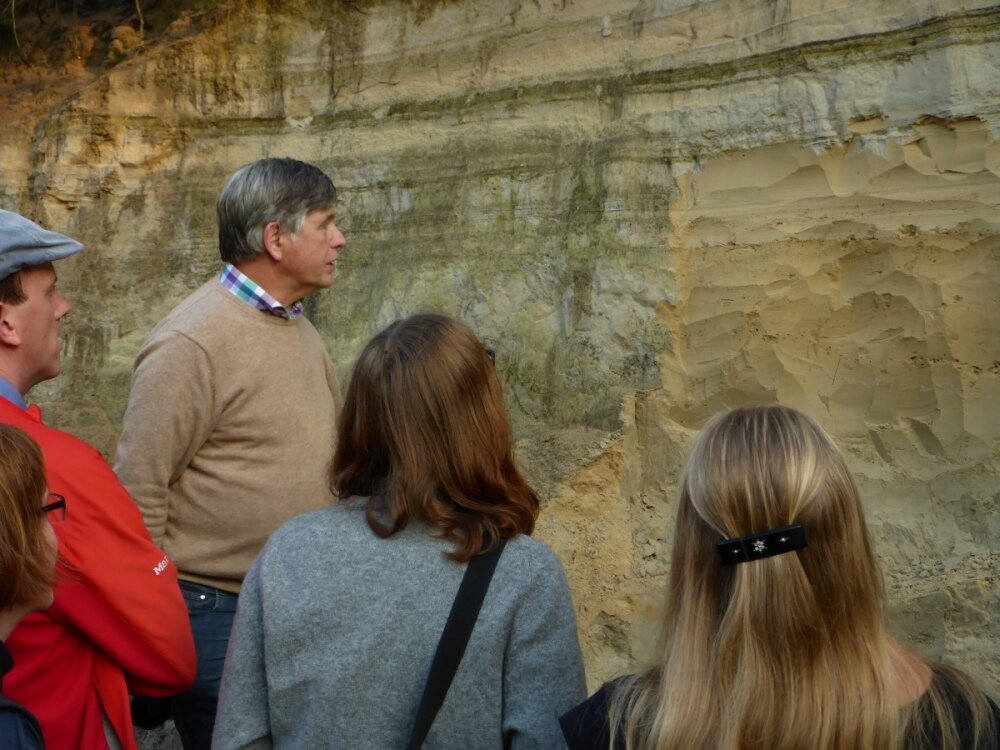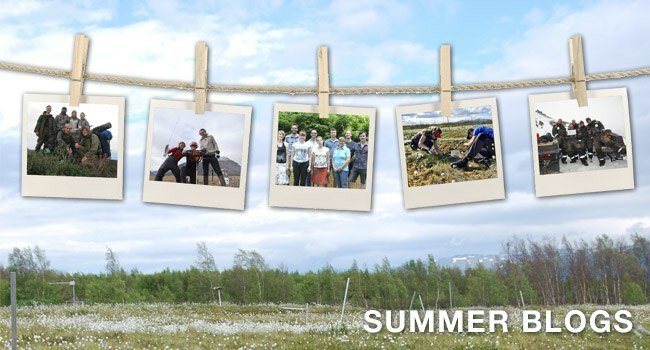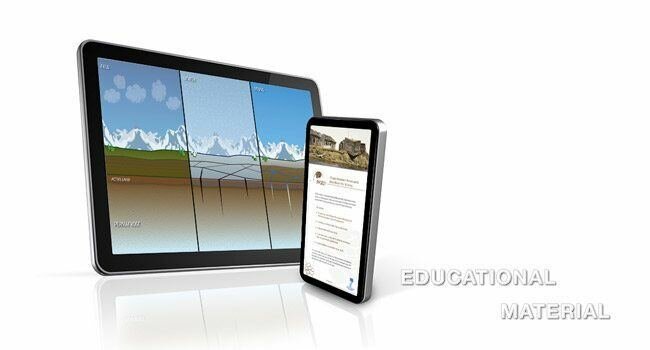Hello our dear readers and welcome again to our tundra stories blog from the Lena Delta. The new field season has started already few months ago and for some of us it will be already the second stay for this year.
As for me, it is going to be my last field season (at least for my PhD time, but I really hope I will come back there again someday). While I am writing this, I try to analyze my thoughts and feelings, and I came up with a notice that every time you think that your previous expedition was so great and unrepeatable that nothing can be better anymore. However, in practise, every new field trip turns out to be even greater than the previous one! So, let us see what this expedition brings .
And now traditionally it is time to introduce our team.
Me, Sonya, PhD student on my second year. My main tasks will be checking out all my subsidence station installed on Kurungnakh Ice Complex in 2013 and, of course, my favourite activity – wandering through the tundra desert and documenting the surface conditions in order to understand the signal from my radar images.
Julia Boike – the boss of our SPARC group. She definitely missed Samoylov and is very excited to go there now! Among her aims are the seismic experiment on the Lucky Lake on Kurungnakh, bathymetry measurements of some lakes and photogrammetry of the polygon on Samoylov.
Niko Bornemann aka Golden Hands - an engineer of our group. He will be also involved into the seismic works as well as to maintaining measurement stations on Kurungnakh.
Steffen Frey is is another engineer in our team and he will take care of the measurement stations on Samoylov.
Günter Stoof (Molo) and Waldemar Schneider are truly indispensable persons on Samoylov. Molo as an engineer can do literally everything. Not to forget the fish! Waldemar coordinates all activities, negotiates with Russian officials and partners. Without his "Hallo zusammen" I cannot imagine any breakfast on Samoylov.
Anne Morgenstern and her student Georg Veh will stay only 10 days on Samoylov with us. Afterwards, they go to Sobo-Sise to join another part of the expedition. They will investigate thermoerosional processes.
Written by Sofia
Add new comment
We arrived on Samoylov Island! Just two days of traveling, it was never so fast! :)
I used again the opportunity to visit my home city - Novokuznetsk, that is why I started from Germany one week earlier and came to Yakutsk from Novosibirsk. The rest of our team arrived from Berlin through Moscow.
Yakutsk airport hosted me for 10 long hours. After three hours of lonely stay I was happy to greet my colleagues and life became much better!
Together with Julia and Anne we visited Permafrost Institut where our dear friend Michail Grigoriev presented us some books and made an excursion for us to the underground lab, within the permafrost. At the entrance you could get a fur coat to feel comfortable in the -8 degrees rooms.
 The flight to Tiksi was surprisingly in time. Right form the airport we were driven to the river dock where we embarked on the vessel "405 Puteyskiy". We knew it already from the last year – it brought us from Samoylov to Tiksi.
The flight to Tiksi was surprisingly in time. Right form the airport we were driven to the river dock where we embarked on the vessel "405 Puteyskiy". We knew it already from the last year – it brought us from Samoylov to Tiksi.
It was nice to see this crew again and even the small ugly dog, although I'm not sure they were also happy to see us :).
We all were so much tired and occupied every peace of horizontal surface to lay down and sleep. I got the window shelf and was very satisfied with it!
In 10 hours we arrived on Samoylov. It was 5 a.m.
 The wonderful breakfast was already waiting for us, we got our rooms (I'm lucky to get even the same bed as I had two previous times) and immediately fell asleep.
The wonderful breakfast was already waiting for us, we got our rooms (I'm lucky to get even the same bed as I had two previous times) and immediately fell asleep.
So the first day started in a different time for each of us, but nevertheless after the dinner we had our first meeting where we introduced ourselves to each other and to the station crew.
All in all we are 23 scientists and engineers from Potsdam, Braunschweig, Hamburg, Saint Petersburg and Krasnoyarsk and 5 people from the station crew.
For the successful beginning of our work we bathed in the Lena river! Weather is very nice, temperature is about 27 degrees Celsius, but water is still refreshing!
Written by Sofia
The first working day for our group was on Samoylov. Julia, Steffen and me had to find temperature loggers in the lakes.
Thanks to Waldemar we have enough rubber boats and we didn't have to carry the boat from the one lake to another. Weather was fine, mosquitoes were annoying like we were the last warm blooded creatures on Earth, in a word - boating was indeed enjoyable.
The loggers are fixed on the rope and the whole construction is installed into the water vertically with the help of a heavy anchor.
The only hint for the sensors location we had was the GPS coordinate of the point where the loggers were installed. But as you may know the spring flood was prominent this year and most likely even the heavy anchor was dragged over the bottom away from its initial point.
We made circles around the point, tried to "fish" loggers with the big hook, looked into the water with diving goggles, but nothing helped - we failed the first three lakes unfortunately.
That is how I learned to take the fails in the field easy.
The fourth lake requited us with the finding and that is how I learned to be patient :). For the next try I suppose we will use the echosounder.
In the evening we had banya! The best thing for relaxing after the day in the field!
Written by Sofia
One of my tasks is to find my subsidence stations and to read them out. We installed them in April 2013 on Kurungnakh Island, in order to investigate the rate of the seasonal subsidence due to the thawing of the active layer in summer.
Most part of this island is occupied by the Ice Complex, containing enormous amount of ground ice.
I have 12 stations for the manual subsidence measurements – simple metal tubes, deeply inserted to the permafrost.
A plexiglas plate with a hole in the middle sets on the ground surface with the pipe passing through the hole.
 The plate moves along the pipe together with the ground. I have to measure the distance between the plate and the end of the pipe few times per season – the difference in my measurements gives me the vertical surface movement.
The plate moves along the pipe together with the ground. I have to measure the distance between the plate and the end of the pipe few times per season – the difference in my measurements gives me the vertical surface movement.
Of course, the method has some disadvantages, for instance, the surface can be disturbed in the measuring point, but it is rather simple and doesn't require any support.
Last summer I got a consistent picture – all of them showed subsidence, on the scale of 2-3 cm, although different rates, most likely depending on the soil moisture at the location.
Besides 12 manual stations I have three automatic ones, where data loggers store the data every hour.
 The distance to the ground is measured by ultrasonic sensor, installed on the metal pole which is inserted also very deep to permafrost in a way to avoid the moving of the pole.
The distance to the ground is measured by ultrasonic sensor, installed on the metal pole which is inserted also very deep to permafrost in a way to avoid the moving of the pole.
These measurement are much better in terms of time resolution, but stations required some support, like changing the batteries and solving the problems with electronics. Moreover, wires can be bitten by animals.
So, this year is already the second season for my measurements and I'm really interested in the results of this year for the comparison.
 First trip to Kurungnakh. To get from the Samoylov Research Station, where we all happily live at the moment, to Kurungnakh, we need a boat. The chief of the Station – Fedor, brings us there every day with comfortable motor boat, and comes in the evening to pick us up.
First trip to Kurungnakh. To get from the Samoylov Research Station, where we all happily live at the moment, to Kurungnakh, we need a boat. The chief of the Station – Fedor, brings us there every day with comfortable motor boat, and comes in the evening to pick us up.
On that first day, Julia and me checked two automatic and 4 manual stations in the southern part of Kurungnakh. We made all in all 10 km by foot, what is not so easy in wet tundra with rubber boots. However, I have to say, that walking with a companion is much more pleasant, than walking alone, like I did last year. Moreover, I got the valuable comments from Julia about my sites, because she is very experienced in periglacial environment.
On the way back we saw a reindeer. He was running so graciously in front of us for quite a long time!
Written by Sonya















